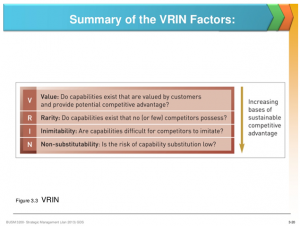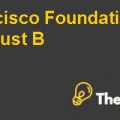Semsom Us- Case Study Market Entry In New York City Case Study Solution
Supplier Power
In the U.S food industry, the suppliers offers discount to those who order minimum produce and on regular basis because fluctuations in production increase the cost of production. Further in U.S food industry, there is a hunt point where every seller deliver their fresh produces at one point and the prices remain controlled through the online website on daily basis. The supplier power in this industry is moderate.
Buyer Power
The US food industry shares 4% of its annual GDP representing the highest growth opportunity. The home out food trend is increasing with the concept of casual food points. This shows that the customer have more concerns over product quality, its ingredient and interior design because of increasing social media concept where they like to show their pictures with pleasant background. The buyer’s power in this industry is very high because of many restaurants available.
Threat of Substitution
There is only home based food threat which shows increasing trend from past some years. In the U.S population, the health consciousness trend is increasing and distracting the customers to go out from home to eat. But this shows a minimum ratios because now restaurants provide their customers with the casual fast food concept in which customization in ingredients is available. So, the threat of substitution is very low.
Threat of New Entry
The U.S food market is showing increasing growth trend because of the increase in population and the trend to eat out. The exhibit 6 from the case shows the market opportunity for the food market, we can see that the market had great potential. The number of permits for franchises and new restaurants is increase with 23,705 in 2014. The U.S food market has great growth potential and hence making way for new restaurants to capture this market.
Attractiveness of the Sector
The U.S food market has a great potential and with the new concept of casual fast food, the threat for lost customers had been minimized. The casual fast food concept provide their customers with the quality product along with furnished restaurants interior. The industry applies the cost cutting strategy through cutting down its staff requirement by taking orders on front line with no wastage of time. This please the customers and increase customer loyalty. The over food industry is very attractive for opening a new restaurant with the consideration of better location, low-priced staff and best quality of products.
Strategic Capabilities
Strategic Capability Framework
The strategic capability framework tells the company’s core competency and resources available. The SWOT analysis will helps in identifying the strength and weakness of the organization.
SWOT analysis
| STRENGHT | WEAKNESS |
| Quality product
Experience of different restaurants Best new recipes |
New entrant
No loyal customers No brand identification |
| OPPORTUNITIES | THREATS |
| Casual Fast food concept
Growing market |
Competitors
Expensive ingredients |
VRIO Analysis
After analyzing all the issues related to this case, a brief VRIO analysis has been done to gather the related case facts.
Value
It has high quality product
Rarity
All the US food competitors provide the best quality food. So, this could be copied. But its core competency is its Lebanese recipes,which couldn’t be copied.
Inimitability
Non substitutability
Conclusion
Bringing Semsom in the US is difficult yet challenging decision, PESTEL analysis reveals that Semsom has good environment to prevail with the support of their rational strategy of bringing fast casual restaurant fast and traditional Lebanese food has an ability to compete with the market players.
Appendices
Appendix: 1
This is just a sample partical work. Please place the order on the website to get your own originally done case solution.
How We Work?
Just email us your case materials and instructions to order@thecasesolutions.com and confirm your order by making the payment here










